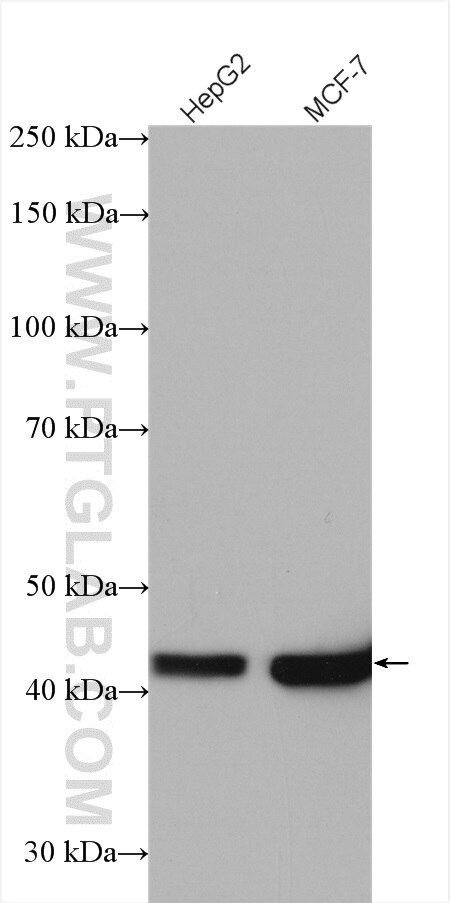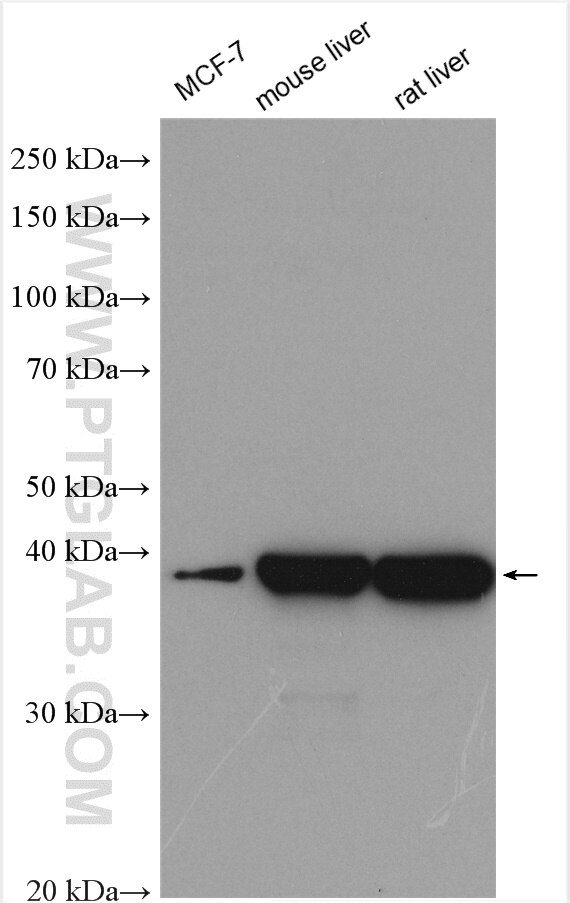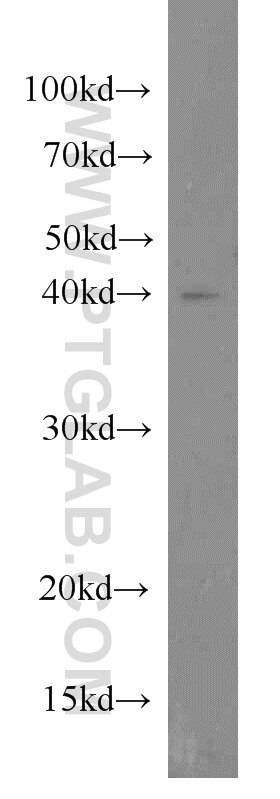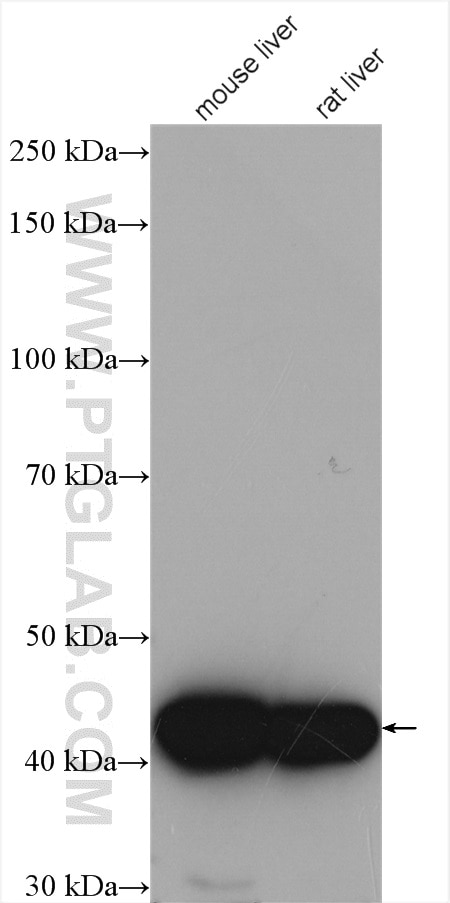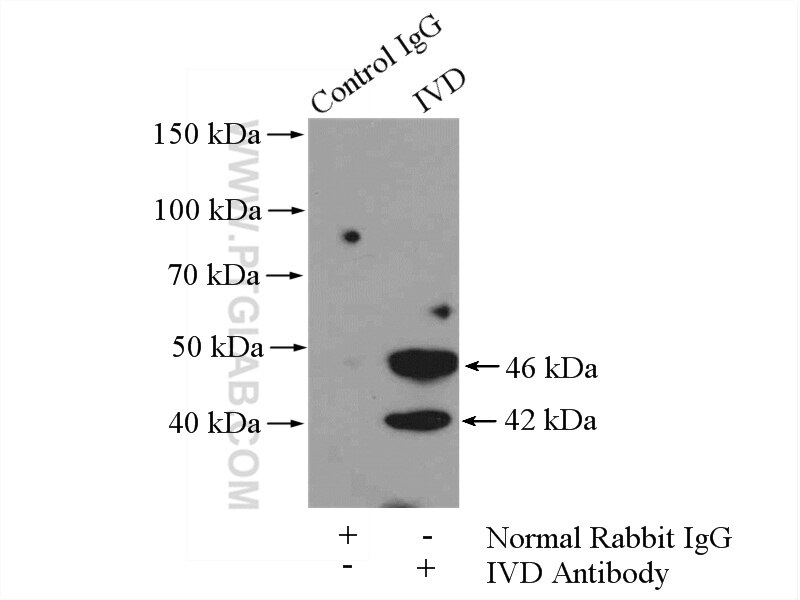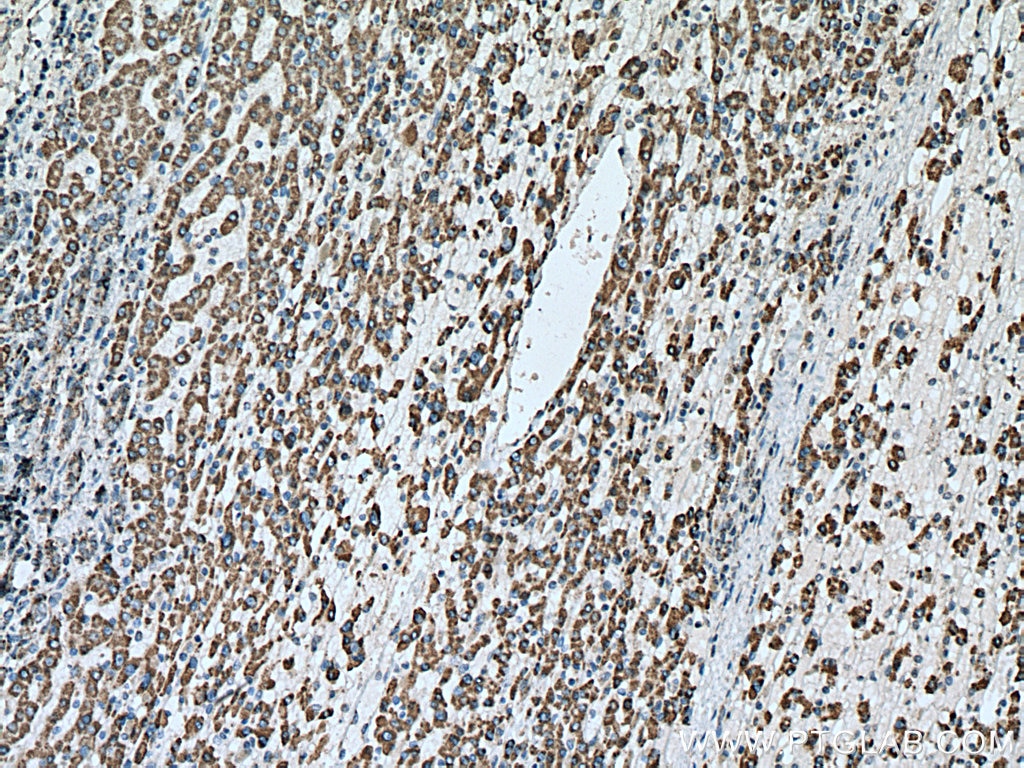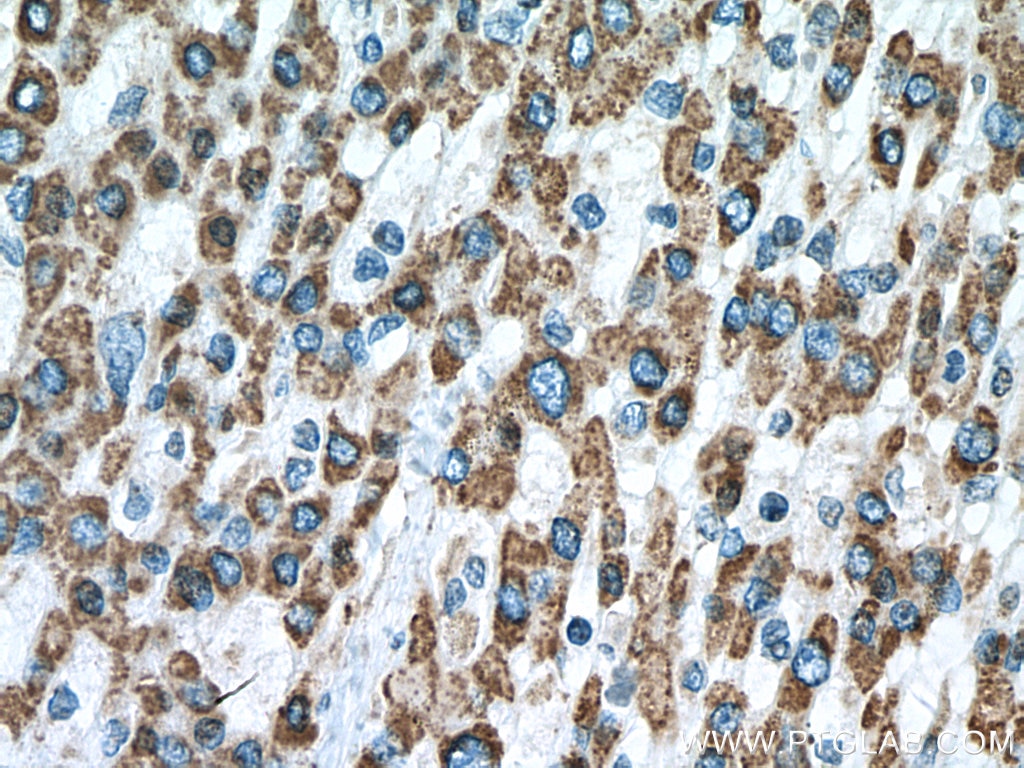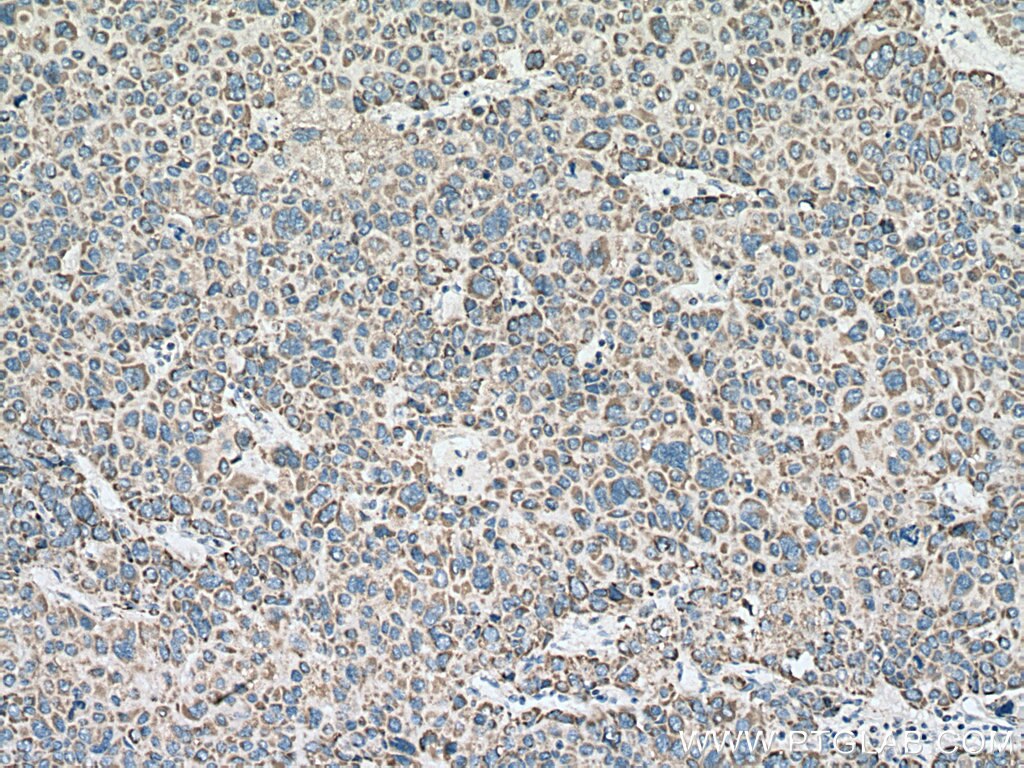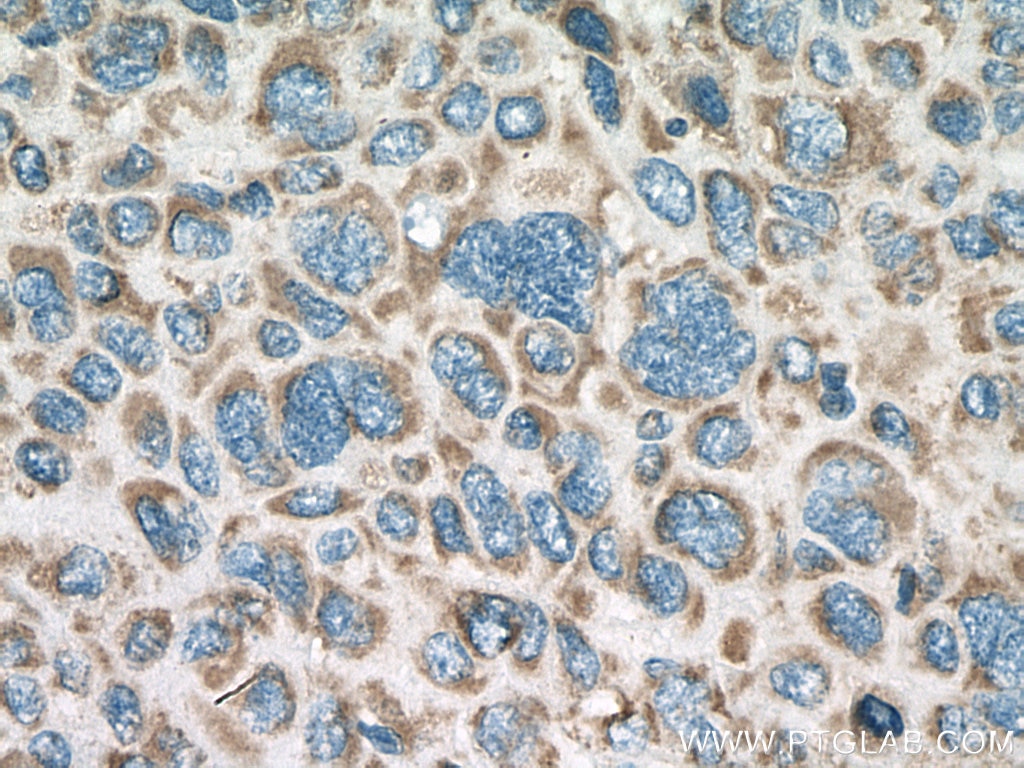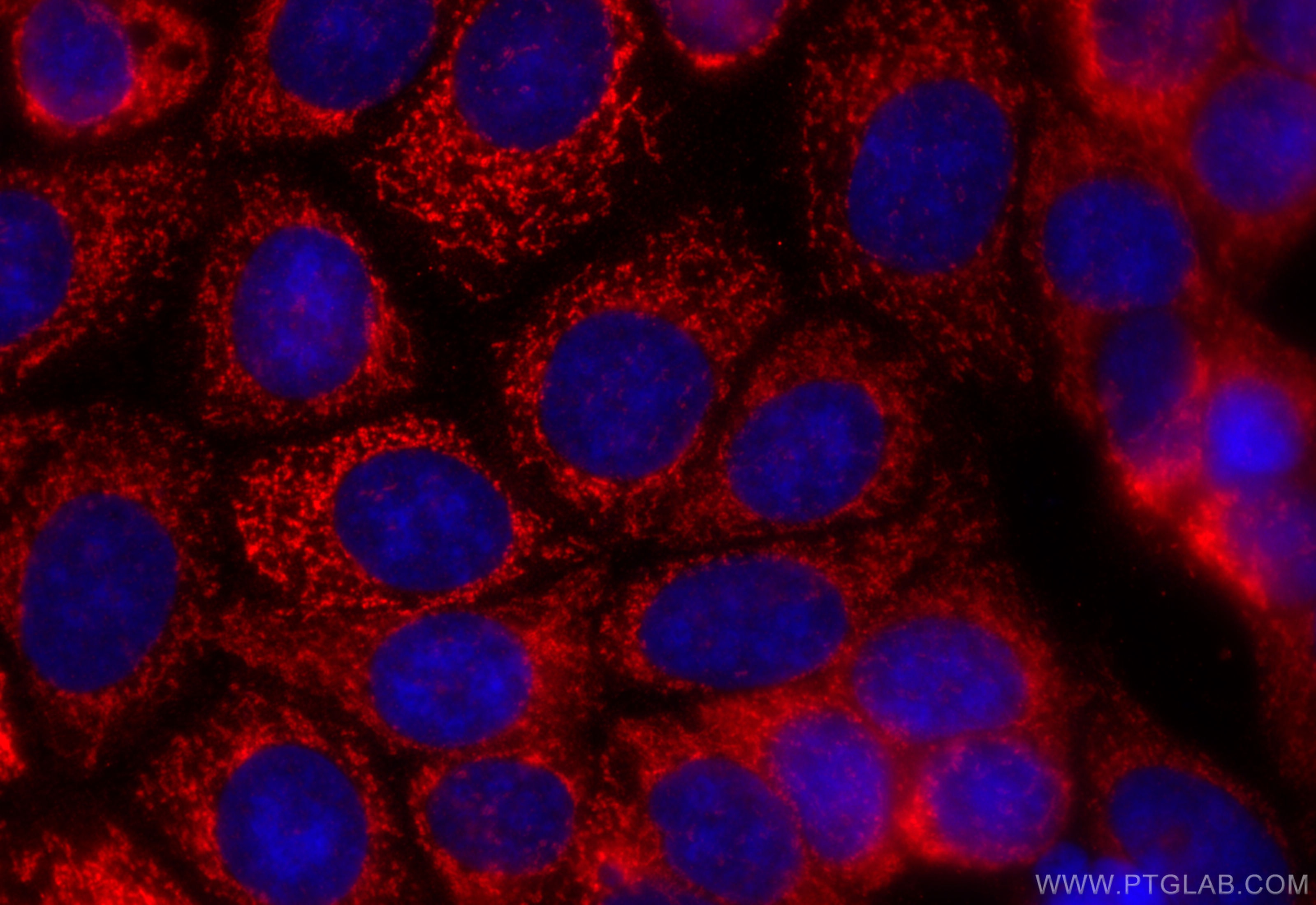Validation Data Gallery
Tested Applications
| Positive WB detected in | MCF-7 cells, human brain tissue, mouse liver tissue, HepG2 cells, rat liver tissue |
| Positive IP detected in | MCF-7 cells |
| Positive IHC detected in | human liver cancer tissue Note: suggested antigen retrieval with TE buffer pH 9.0; (*) Alternatively, antigen retrieval may be performed with citrate buffer pH 6.0 |
| Positive IF/ICC detected in | MCF-7 cells |
Recommended dilution
| Application | Dilution |
|---|---|
| Western Blot (WB) | WB : 1:2000-1:12000 |
| Immunoprecipitation (IP) | IP : 0.5-4.0 ug for 1.0-3.0 mg of total protein lysate |
| Immunohistochemistry (IHC) | IHC : 1:300-1:1200 |
| Immunofluorescence (IF)/ICC | IF/ICC : 1:50-1:500 |
| It is recommended that this reagent should be titrated in each testing system to obtain optimal results. | |
| Sample-dependent, Check data in validation data gallery. | |
Published Applications
| WB | See 7 publications below |
| IHC | See 1 publications below |
Product Information
10822-1-AP targets IVD in WB, IHC, IF/ICC, IP, ELISA applications and shows reactivity with human, mouse, rat samples.
| Tested Reactivity | human, mouse, rat |
| Cited Reactivity | mouse, rat, arabidopsis |
| Host / Isotype | Rabbit / IgG |
| Class | Polyclonal |
| Type | Antibody |
| Immunogen |
CatNo: Ag1252 Product name: Recombinant human IVD protein Source: e coli.-derived, PGEX-4T Tag: GST Domain: 1-423 aa of BC017202 Sequence: MATATRLLGCRVASWRLRPPLAGFVSQRAHSLLPVDDAINGLSEEQRQLRQTMAKFLQEHLAPKAQEIDRSNEFKNLREFWKQLGNLGVLGITAPVQYGGSGLGYLEHVLVMEEISRASGAVGLSYGAHSNLCINQLVRNGNEAQKEKYLPKLISGEYIGALAMSEPNAGSDVVSMKLKAEKKGNHYILNGNKFWITNGPDADVLIVYAKTDLAAVPASRGITAFIVEKGMPGFSTSKKLDKLGMRGSNTCELIFEDCKIPAANILGHENKGVYVLMSGLDLERLVLAGGPLGLMQAVLDHTIPYLHVREAFGQKIGHFQLMQGKMADMYTRLMACRQYVYNVAKACDEGHCTAKDCAGVILYSAECATQVALDGIQCFGGNGYINDFPMGRFLRDAKLYEIGAGTSEVRRLVIGRAFNADFH 相同性解析による交差性が予測される生物種 |
| Full Name | isovaleryl Coenzyme A dehydrogenase |
| Calculated molecular weight | 46 kDa |
| Observed molecular weight | 41-46 kDa |
| GenBank accession number | BC017202 |
| Gene Symbol | IVD |
| Gene ID (NCBI) | 3712 |
| RRID | AB_2296258 |
| Conjugate | Unconjugated |
| Form | |
| Form | Liquid |
| Purification Method | Antigen affinity purification |
| UNIPROT ID | P26440 |
| Storage Buffer | PBS with 0.02% sodium azide and 50% glycerol{{ptg:BufferTemp}}7.3 |
| Storage Conditions | Store at -20°C. Stable for one year after shipment. Aliquoting is unnecessary for -20oC storage. |
Background Information
IVD(Isovaleryl CoA dehydrogenase, mitochondrial) is a member of the acylCoA dehydrogenase family and is involved in the catabolism of leucine. In size, IVD precursor and mature proteins produced by class I mutants are indistinguishable from their normal counterparts. Class II, III, and IV mutants make IVD precursor proteins 42 kD in size rather than the normal 45 kD(PMID:2063866). It has 2 isoforms produced by alternative splicing.
Protocols
| Product Specific Protocols | |
|---|---|
| IF protocol for IVD antibody 10822-1-AP | Download protocol |
| IHC protocol for IVD antibody 10822-1-AP | Download protocol |
| IP protocol for IVD antibody 10822-1-AP | Download protocol |
| WB protocol for IVD antibody 10822-1-AP | Download protocol |
| Standard Protocols | |
|---|---|
| Click here to view our Standard Protocols |
Publications
| Species | Application | Title |
|---|---|---|
Cell Mol Life Sci Mitochondrial FAD shortage in SLC25A32 deficiency affects folate-mediated one-carbon metabolism. | ||
Mol Endocrinol Research resource: A dual proteomic approach identifies regulated islet proteins during beta cell mass expansion in vivo. | ||
J Neurochem Proteomic analysis of stargazer mutant mouse neuronal proteins involved in absence seizure. | ||
Plant Cell Rep The role of the electron-transfer flavoprotein: ubiquinone oxidoreductase following carbohydrate starvation in Arabidopsis cell cultures. | ||
Proteomics Clin Appl Loss of Pink1 modulates synaptic mitochondrial bioenergetics in the rat striatum prior to motor symptoms: concomitant complex I respiratory defects and increased complex II-mediated respiration. |

